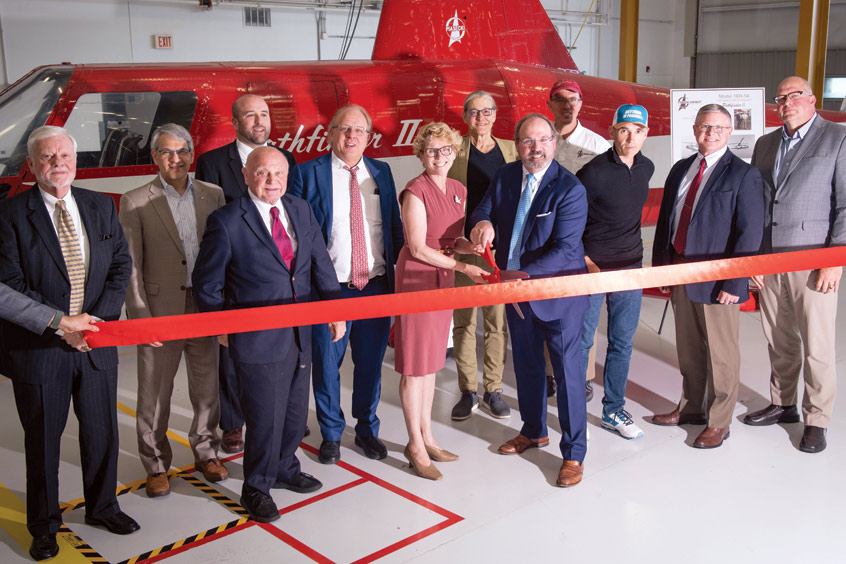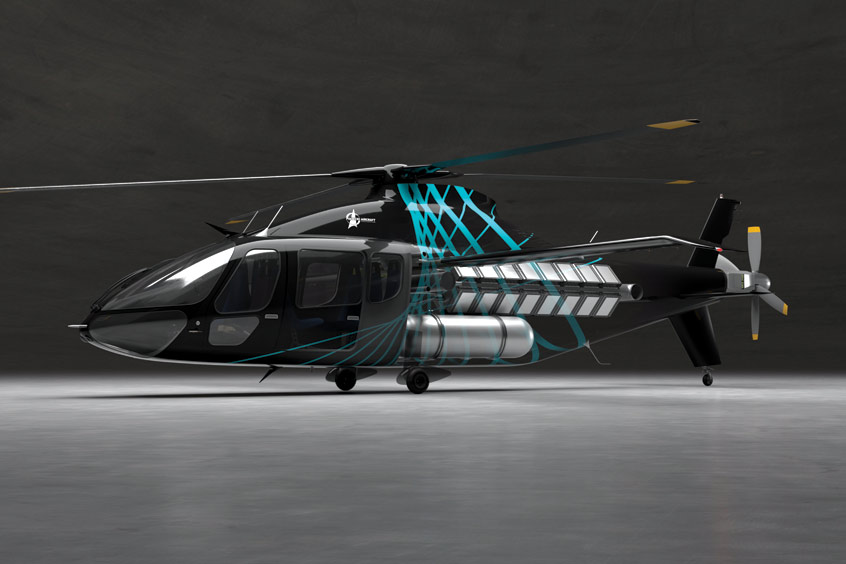Why visit ACE ’25?



Piasecki Aircraft Corporation (PiAC), a US pioneer in advanced rotorcraft technology, has acquired the former Lockheed Martin Sikorsky Heliplex facility in Coatesville, Pennsylvania, which previously served as a production and delivery center for Sikorsky's S-76 and S-92 helicopters.
The company will transform the 219,000 sq ft facility into an advanced R&D centre for next-generation vertical take off and landing (VTOL) aircraft, unmanned aerial systems (UAS) and related enabling technologies. Notably, the company's forthcoming PA-890 helicopter, the world's first zero-emission hydrogen fuel cell rotorcraft, will be built and tested there. The facility, which includes engineering development, aircraft assembly, paint and finishing facilities, and a well-equipped production flight test and delivery centre, will open its doors to employees in the autumn and is expected to attract about 400 workers by 2028.
"This world-class facility will serve as a strong foundation for future growth and will enable us to expand our R&D and production capabilities as we deliver transformational vertical lift technologies to the defence and commercial markets," says CEO John Piasecki. "We chose to expand our development capabilities in the Delaware Valley because of its deep roots within the helicopter industry, its highly-talented workforce and its robust supplier network. PiAC is committed to creating local jobs by fostering cutting-edge innovation, and we're excited to support a community that has long prided itself on delivering aviation excellence."
"Chester County is home to some of the most talented manufacturing and tech workforces in the country," says US Representative Chrissy Houlahan from Pennsylvania's sixth congressional district. "Piasecki's expansion into Coatesville is further testament to what many of us have known for years; Chester County is a great place to grow your business. It's incredibly exciting to see a company like Piasecki, a long-time aviation industry innovator, continue its commitment to developing new technologies like the PA-890 hydrogen fuel cell-powered helicopter right here in PA's sixth district. These advancements have the potential to transform vertical lift flight and help eliminate carbon emissions. Piasecki's Coatesville expansion will revitalise the manufacturing facilities that were formerly home to Lockheed Martin/Sikorsky Heliplex. I'm proud to support its vision and will continue to support innovations such as hydrogen fuel cell development through my work in Congress."
Piasecki's acquisition and expansion into the Heliplex facility was enabled by the strong support from Pennsylvania Governors Tom Wolf and Josh Shapiro; Chester County Commissioners; the Chester County Economic Development Council; Senator Robert Casey and Congresswoman Chrissy Houlahan.
"2023 marks 80 years of PiAC innovation in vertical flight, a legacy that began in 1943 with the PV-2, the second successful helicopter to fly in America, now on display at the Smithsonian Air & Space Museum. Shortly after, PiAC developed the world's first tandem rotor helicopter, a revolutionary design that has been instrumental in countless life-saving missions around the globe since WWII and which lives on in Boeing's CH-47 Chinook helicopters," says Piasecki. "PiAC is building on this legacy with a truly groundbreaking vertical lift technology portfolio, including advanced digital flight control and flight automation technology, hydrogen fuel cell and hybrid propulsion systems, morphing aerostructures and more. We work closely with partners in government, academia and industry to advance these technologies and develop platform and system-level air vehicle integrations as well as conduct flight tests."
Major PiAC R&D programmes currently being executed:
- Hydrogen fuel cell PA-890 eVTOL: The PA-890 eVTOL aircraft is said to be the first zero-emission hydrogen-powered compound helicopter. The slowed-rotor winged helicopter is intended for use in a variety of missions including emergency medical services (EMS), delivery of high-value, on demand logistics (ODL), on demand mobility (ODM) personnel air transport and many other commercial applications. In addition to zero carbon emissions, the PA-890 eVTOL enables up to a 50 per cent reduction in direct operating cost and reduced noise compared with today's fossil fuel turbine helicopters. PiAC is collaborating with ZeroAvia, a leader in hydrogen-powered fixed wing aviation, to develop and implement its revolutionary High Temperature Proton Exchange Membrane (HTPEM) hydrogen fuel cell technology for the PA-890 and other VTOL applications. Investment from the US Air Force in the ground testing of a 660kW HTPEM hydrogen fuel cell propulsion system is accelerating the development, certification and production fielding of the PA-890 to address the needs of the military as well as the $40 billion commercial light helicopter market.
- Aerial Reconfigurable Embedded System (ARES): ARES is a modular multi-mission tilt duct VTOL vehicle that can be operated unmanned (UAS) or with an optional manned flight module. ARES is designed with a small landing footprint to enable shipboard and expeditionary operations as well as provide embedded multi-mission C4I, ISR, combat and logistics support to small distributed combat forces operating over extended distances and in complex terrain. Rapidly-reconfigurable mission payload modules deliver mission flexibility that significantly reduces overall logistics footprint and cost. The ARES demonstration vehicle was developed in partnership with Lockheed Martin with funding from DARPA. With follow-on funding from the US Air Force and Army, PiAC and Honeywell are developing and integrating a triplex fly-by-wire flight control system to initiate ARES flight testing by the end of this year.
- Adaptive Digital Automated Pilotage Technology (ADAPT): ADAPT is a flight control software package designed to achieve unprecedented improvements in safety/survivability, performance and affordability for US military and commercial aircraft. ADAPT exploits the inherent redundancy of control effectors present in advanced VTOL platforms and modified legacy fleet rotorcraft to automatically allocate control commands between effectors to respond to aircraft damage or to optimise the control configuration of the aircraft for increased performance, manoeuvrability, reduced vibration or fatigue loads, or for a weighted combination of these attributes.